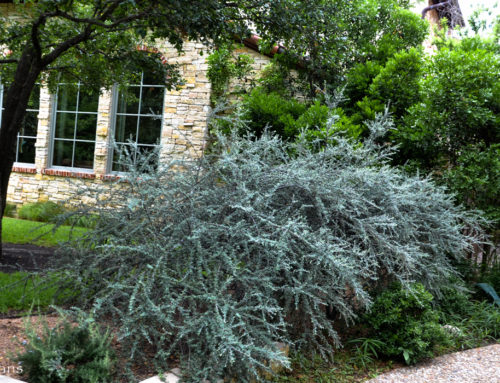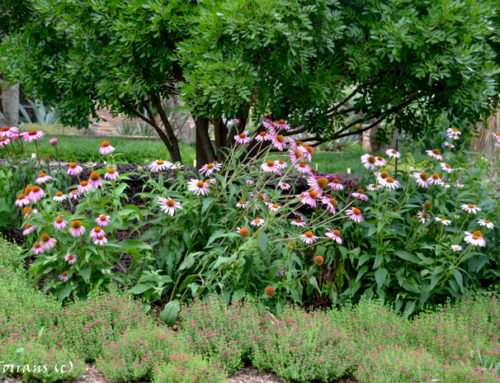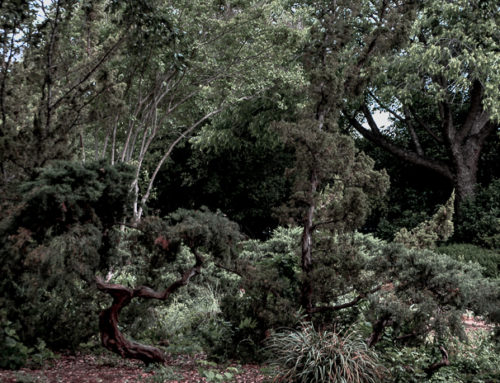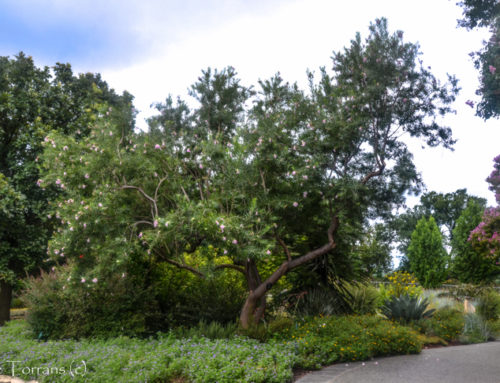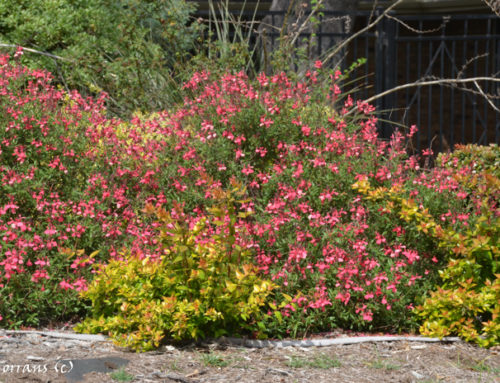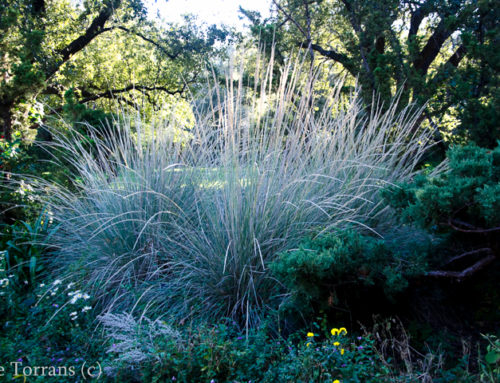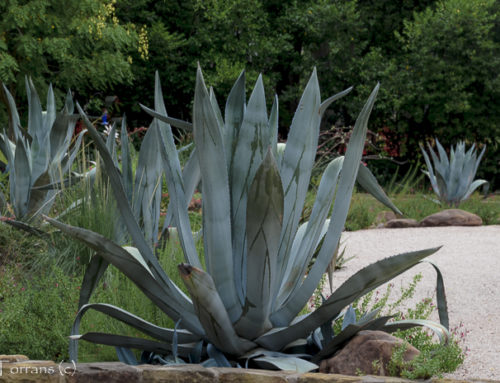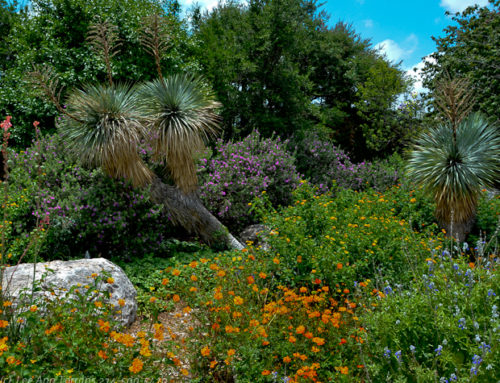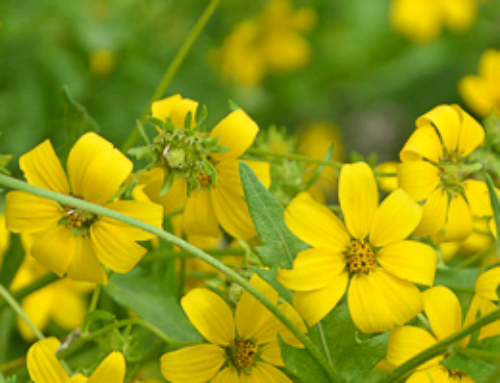Texas Native Plants and Gardening: Agave |
| There are more than 150 varieties of agave. |

Native plants in Texas landscaping include the Agave, seen here mixed with cedars and cotoneaster shrubs.  Native plants in Texas landscaping include the Agave, seen here mixed with cedars and cotoneaster shrubs. |
| Agave and the prickly pear have a photosynthesis ability that allows them to flourish in semiarid environments like many parts of Texas.
Crassulacean acid metabolism, the CAM process is the basis of a study to transfer their photosynthetic pathway to other plants. |
 Agave with myrtle spurge, native Texas landscaping. |
 Colorful native plants for Texas landscaping design coneflowers in foreground and Rudbekia in background with sedums just ready to bloom. |
 Agave is so drought resistant that has been studied for decades in hopes of finding a way to replicate its pathways for other plants.
|
|
|
|
|
I Call the Agave the Genius Plant because They Are SO Smart |
| CAM plants absorb their CO2 at night rather than the day like most plants meaning there is less evaporation requiring between a fifth and a third of the water that other plants require. They must store carbon overnight. They still use their build sugar and starch energy reserves which require the sun! The sun is their fuel, too. |
| Agaves fix their carbon in a transient pool of malic acid. The sun breaks down these acids and then viola, release the C02. Their stomata are not required to remain open because carbon is already in their leaf. |
| The Agave Plant comes in many shapes, sizes and colors, including variegated. In landscaping, like painting, the golden triangle is effective. Below you see yuccas and three kinds of agaves located at the Dallas Arboretum. |
 |
 |
| The Agave plant is native to Texas and the southwest. It is a succulent and not a cacti, though it shares many characteristics with cacti. As a succulent, the agave stores water in its leaves. There are between 100 and 200 species of the Agave with “The Century Plant” being the best known. The Agave is related to the aloe plant. Many agave flower once every ten years. The tall flower grows from the center of the agave bearing tubular flowers. After development of fruit, the original plant dies with new plants produced from the base of the stem. |
 Agave in Texas Landscape Design |
| Tequila is made from the Agave plant. All 100% blue agave tequila must be made from the Weber blue agave plant, to rigorous specifications and only in certain Mexican states. This is similar to the requirement that Bourbon be distilled in Bourbon County, Kentucky. The Agave is not a full sun lover. It actually does best with filtered sun or just a tiny bit of shade. Water your agave once every 4 – 5 days for for the first season as it become established and once a day in dry times for the first two months. Once established the agave can be watered once every ten days to two weeks if there is no rain. The plant is shallow rooted so watering with a soaker hose works very well.
The agave has two growing seasons, spring and fall. While it will benefit from a 20-20 fertilizer during these seasons that will also encourage flowering, which will signal death for the plant. 1) Crown rot is a fungus that is present and become threatening with high moisture. A preventative fungicide will address this issue. 2) Snout weevils are a beetle that law their eggs between the leaves. Mites can also be a problem. These are addressed with an insecticide. If untreated these can kill an agave. The juice from many species of agave can cause skin blistering lasting one to two weeks. If the skin is pierced deeply enough by the needle-like ends of the leaf from a vigorously growing plant blood vessels in the surrounding area can erupt. It is for this reason the agave plant is considered to be potentially poisonous. |
 |
The Whale’s Tongue Agave is shown with its side shoot. |
 |
Agave Tequillana |
| Agave Tequillana = This is the agave tequilla is made from. |
 |
 Texas Native Plants Agave This image demonstrates how Agave spread. Baby Agaves for friends!!! |
 Texas Native Plants Agave |
Container Gardening with Succulents |
 Agave in container blends perennial gardening with containers. |
 Yucca-Container-Gardening  Red Yucca Container Gardening  Palm Container Gardening |
 Yucca Container Gardening |
 Palms with Yuccas. |
Devils Claw |
 Devil’s Claw for the most arid of climates. |
| Do you know about Devil’s Claw? It grows in the hottest, driest parts of Africa.
Devil’s claw—a plant named for its spiky, fist-like seed pods—has been used by the Khwe people of southern central Africa for as long as anyone can remember. Its relative abundance in Namibia’s Bwabwata National Park is precious—as is the organic, sustainable harvesting business the Khwe people are now building around devil’s claw. It’s a business where women are the main farmers and the main beneficiaries. |
If You Love It Pin It! |
 Agave: There are over 150 varieties. Used to make tequila and studies to evaluated drought survival abilities. |
 Agave: There are over 150 varieties. Used to make tequila and studies to evaluated drought survival abilities.  Agave: There are over 150 varieties. Used to make tequila and studies to evaluated drought survival abilities. |


